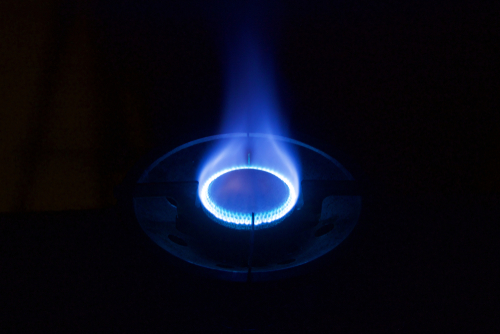Written on: November 8, 2021
 Did you know that propane gas has a lower carbon content than fuel oil, gasoline, diesel, kerosene and ethanol? That’s a big part of the reason the US Congress designated propane as a clean-burning alternative fuel in the 1990s.
Did you know that propane gas has a lower carbon content than fuel oil, gasoline, diesel, kerosene and ethanol? That’s a big part of the reason the US Congress designated propane as a clean-burning alternative fuel in the 1990s.
There are two primary ways propane is produced. The majority of propane is derived from natural gas production. To stop condensation from forming in natural gas pipelines, propane is extracted from liquid compounds as the natural gas is being processed. Butane is also extracted during this process. Propane, being much denser as a liquid than as a gas, is stored and transported as a liquid in this form of production.
Propane can also be created during the process of crude oil refining. There are a lot of products that can be derived from crude oil refining, including gasoline, diesel fuel, kerosene, jet fuel and heating oil. And of course, propane as well. During the stabilization phase of the refining, the heavier hydrocarbons fall to the bottom. But propane, being a lighter hydrocarbon, is at the top and it’s easily extracted.
Because propane is created through the processing of natural gas and crude oil, it is a fuel that is largely a domestic product. In fact, about 90% of the American propane supply is generated right here in the United States! That abundant, right-at-home supply makes propane a reliable fuel choice for your Hudson Valley home, including all of its appliances, throughout the year.
Propane emits less than half the greenhouse gas emissions of electricity to produce the same amount of energy. That’s primarily because more than 60% of the electricity used in our country is produced by either coal-fired facilities or natural gas powered generation plants, which produce a lot of greenhouse gases.
Propane-powered appliances are typically much more efficient than electric models of similar size and output. Less energy used equals less environmental impact. Consider this: propane generates much more Btu’s than an equivalent amount of electricity. Put another way, you need much less propane to produce the same amount of heat energy. For example, just one gallon of propane equals 27 kilowatt hours (kWh) of electricity.
According to the Alternative Fuels Data Center, 60% of alternative-fuel vehicles nationwide operate on propane, from buses to fleet trucks, forklifts, lawnmowers and farm tractors. It is the third most popular vehicle fuel, next to gasoline and diesel.
Autogas is the term used to describe propane when it is used as a fuel for vehicles. Autogas is the world’s most popular alternative fuel. In fact, there are more than 300,000 vehicles in the U.S. that have been manufactured or converted to use propane autogas!
Its popularity has led to an array of innovations in OEM-supported vehicles that use the fuel, including light- and medium-duty trucks, vans and shuttles.
Additionally, there are now about 15,000 propane-powered buses in the country transporting nearly one million children to school each day, and that number keeps increasing.
Read about propane autogas in New York.
The propane industry is committed to using less energy and improving our air by way of carbon reduction, sustainable practices and diminishing—or eliminating—our carbon footprint. The advent of renewable propane is part of that solution. Read more about renewable propane.
We’re standing by ready to help our propane and heating oil customers stay warm, safe and worry-free this season. If you would like to start enjoying all the advantages of becoming a Downey Energy customer, including reliable propane or heating oil deliveries, please go here.
Downey Energy, providing Warm Service Since 1917, proudly provides service to homes and businesses all around Dutchess County, Orange County, Putnam County and northern Westchester County in New York. Enter your zip code here to find out if you’re in our Service Area.